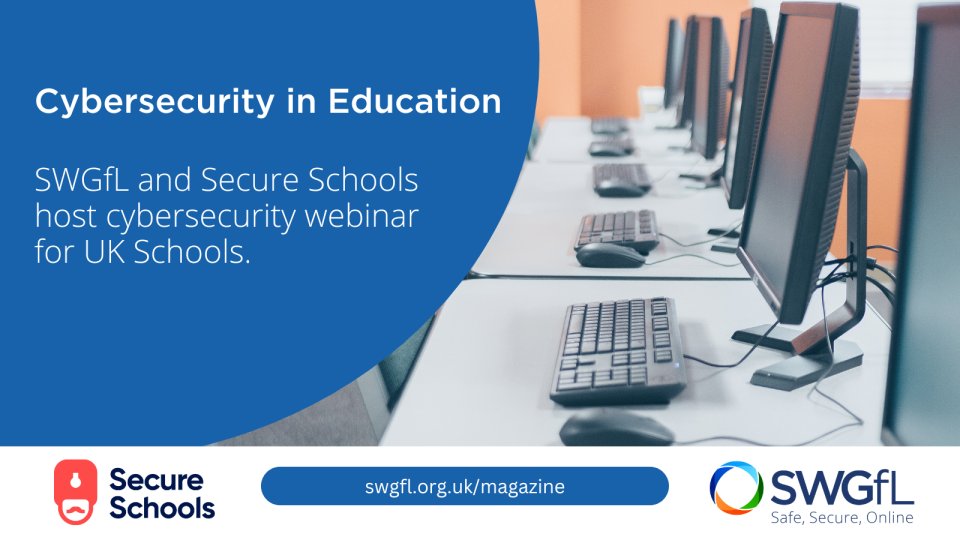As online threats continue to evolve, schools across the UK face growing pressure to safeguard their digital infrastructure while supporting safe and secure learning. That’s why SWGfL, in collaboration with Secure Schools, recently hosted a national webinar bringing together leading experts to unpack the findings of the Cyber Security Breaches Survey 2025, with a focus on what it means for the education sector.
With strong interest from schools, trusts and local authorities, the session aimed to translate the data into clear, actionable guidance.
Vital Insight for the Education Sector
The Cyber Security Breaches Survey, published annually by the Department for Science, Innovation and Technology (DSIT) in partnership with the Home Office, offers a national snapshot of how UK organisations (including schools) are experiencing and managing cyber threats.
As Saman Rizvi (DSIT) explained during the session, the education annex of the survey was introduced in 2023 to provide more focused insight into the specific challenges and needs of schools and colleges. This research works to identify the key risks and informs how schools can respond more confidently and effectively.
Our Panel of Experts
We were pleased to welcome a fantastic panel with diverse experience in cybersecurity and education:
- Saman Rizvi, Cyber Resilience Analyst, DSIT
- Arati Patel-Mistry, Cybersecurity Lead, Department for Education
- Heather Toomey, Principal Cyber Advisor, Information Commissioner’s Office
- Peter Bradman, IT Manager, Aspire Academy Trust
- Tim Line, Operations Director, Secure Schools
Each brought a unique perspective, from policy and research to day-to-day operations in schools and trusts, helping us explore the data and its implications for schools across the UK.
Key Takeaways from the Webinar
Throughout the discussion, several important points emerged:
- Cyber incidents are becoming more frequent and more complex. Phishing and ransomware remain common threats, but cloud security and device misuse are growing concerns.
- Many schools are still underprepared. While awareness is increasing, significant gaps remain in staff training, incident response planning and risk assessments.
- Human error continues to be a major vulnerability. This underscores the need for a strong safeguarding culture alongside technical controls.
- Device and access management. Particularly in cloud and 1:1 environments. This must be carefully planned and monitored.
As one panellist put it: “Cybersecurity is no longer just a technical issue, it’s a whole-school safeguarding responsibility.”
What Schools Should Do Now
To support schools in building stronger defences, our panel encouraged all attendees to:
- Read the full Cyber Security Breaches Survey 2025 – use it to benchmark your school’s posture and identify gaps.
- Adopt the Department for Education’s Cyber Standards for Schools – designed to help schools build cyber resilience in line with national expectations.
- Review your staff training and incident response procedures – especially around phishing, password hygiene, and data protection.
George Martin (Security and Data Protection at SWGfL) said: “It was fantastic to see such strong engagement from the education community around this crucial topic. The Cyber Security Breaches Survey continues to shine a light on the unique challenges schools face in today’s digital landscape. By bringing together leading voices from government, regulation and the classroom, this webinar gave us a valuable opportunity to not only unpack the findings but to translate them into meaningful action. I’d encourage every school leader and safeguarding professional to explore the report and reflect on how their organisation is building resilience.”
Tim Line (Operations Director, Secure Schools) said: ‘’The Cyber Security Breaches Survey continues to highlight the real challenges schools face around cybersecurity. What stood out this year is the ongoing gap between awareness and action. At Secure Schools, we see this regularly and understand how important it is to put knowledge into action. That could mean improving training, building a stronger cybersecurity culture, or having a clearer incident response plan. This webinar was a valuable opportunity to bring those issues into focus and help schools feel more confident about what to do next.’’






